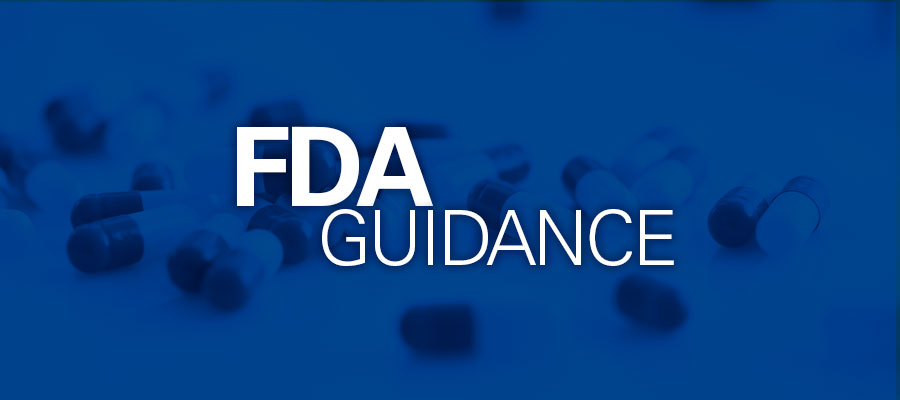The Food and Drug Administration (FDA or the Agency), the US authority responsible for medical devices regulation, issued the enforcement policy for remote digital pathology devices in the context of the outbreak of the Coronavirus Disease 2019 (COVID-19) caused by the virus “SARS-CoV-2” or the “novel coronavirus” and public health emergency associated thereto. Due to the national emergency announced in the US earlier in March 2020, the present guidance is intended to be implemented immediately, without the prior public consultations to be held under the general procedure. At the same time, the Agency will also accept and consider comments submitted by the industry representative in accordance with the applicable procedure. The new procedures implemented by the guidelines will remain in force only during the public health emergency announced in connection with the pandemic and the appropriate public health emergency announced earlier in January 31 by the Secretary of Health and Human Services (HHS). At the same time, it is also important to mention that the FDA guidance does not implement legal obligations and enforceable responsibilities due to the specific of its legal nature. Thus, all the provisions stated therein should be construed mostly as recommendations of the Agency, rather than as binding requirements any entity operating with medical devices shall duly fulfill.

Scope of the FDA Guidance
FDA guidance is one of the guidelines intended to implement special measures necessary to ensure the availability of vitally important medical devices during the coronavirus disease outbreak. In particular, the present guidance is dedicated to medical devices used for remote reviewing and reporting of scanned digital images of pathology slides. The scope of the guidance covers the following types of medical devices:
- Automated Digital Image Manual Interpretation Microscope (Class II medical device with the product code OEE, regulated under the 21 CFR 846.1860),
- Whole Slide Imaging System (Class II medical device with the product code PSY, regulated under the 21 CFR 864.3700),
- Digital Pathology Image Viewing and Management Software (Class II medical device with the product code QKQ, regulated under the 21 CFR 864.3700), and
- Digital Pathology Display (Class II medical device with the product code PZZ, regulated under the 21 CFR 864.3700).
The Agency states that the devices covered by the scope of the guidance are intended to be used and actually mostly used in special environments: healthcare facilities or clinical laboratories. However, the same devices could be also used for reviewing and reporting digital pathology slides being deployed at remote locations.

Digital Pathology Devices: Regulatory Approach
The Agency states that during the pandemic, digital pathology devices could be useful to mitigate the risks associated with direct contacts between patients and healthcare professionals, reducing the risks related to the infection.
In accordance with the Clinical Laboratory Improvement Amendments of 1988 (CLIA), any clinical laboratory intended to operate with the human body derivatives in order to perform examination aimed at obtaining the information that later would be used for diagnosing, treating or other purposes, related to the patient’s health, should be duly certified to be allowed to perform such activity. According to the scope of initial FDA clearance, the digital pathology devices covered by the present guidance, are intended to be used exclusively in the clinical environment: in clinical laboratories or healthcare facilities. Thus, under the general rule, the devices of this type are not approved for home use since they should be used only by CLIA-certified institutions.
At the same time, in the context of the coronavirus disease outbreak, certain regulatory steps had been made in order to expand the initial scope of the use of digital pathology devices. In particular, earlier in March 2020, the Centers for Medicare & Medicaid Services (CMS) published guidelines describing the way the devices of this type could be used to review images and slides remotely. According to the aforementioned document, clinical laboratories were allowed to use remote procedure providing that any and all requirements set forth by the guidance are met.
FDA Clearance and Marketing Approval
According to the general rule, the manufacturers intended to place digital pathology devices, covered by the scope of the present FDA guidance, on the US medical devices market, should apply for the FDA clearance by submitting an appropriate 510(k) premarket notification.
At the same time, due to the risks associated with the coronavirus disease outbreak, and also the potential benefits of expanded use of digital pathology devices for remote reviewing and reporting during the pandemic, the Agency implements certain regulatory flexibilities intended to ensure and expand the availability of the aforementioned devices. In particular, the Agency would not object to:
- Making modifications to the hardware and/or software of the device, previously properly approved by the FDA, its functionality or indications, reasonably necessary to introduce the possibility of using the device in question remotely,
- Placing entirely new digital pathology devices on the market before such devices have been properly assessed and approved by the FDA, in case if the device in question is being designed to be used remotely.
The list of requirements the Agency allows to waive also includes the submission of the 510(k) premarket notification, requirements related to the Good Manufacturing Practice, as well as the requirements on the Unique Device Identification (UDI). It is also allowed to waive certain requirements related to compliance with the special controls.
It is also important to mention that all aforementioned special measures would remain effective only within the period of the public health emergency associated with the outbreak of the COVID-19. The Agency states that these measures would not result in increased risk for public health providing that the manufacturer and its device comply with the appropriate performance and labeling requirements set forth in the present FDA guidance.
Labeling and Performance Requirements
In accordance with the guidance, the information supplied by the manufacturer with the digital pathology device should include:
- Detailed instructions for the CLIA-certified institutions describing the approach to be used to determine whether the remote reviewing and reporting would be suitable and effective. When making such determination, an entity shall also consider its existing information technology infrastructure. The Agency also advises performing a valuation study.
- Detailed instructions describing the way healthcare professionals should make their decisions based on the information (images) provided by the digital pathology devices, taking into account the quality of such images and its potential impact on the accuracy of the decisions made.
It is also advised to utilize certain harmonized standards recognized by the FDA, such as:
- ANSI/AAMI ES60601-1:2005 (R2012),
- IEC 60601-1-2:2014.
Performance-related requirements are set forth by the applicable CLIA regulations and State legislation on medical devices.
Due to the nature of the digital pathology devices, the Agency additionally emphasizes the importance of cybersecurity measures to be implemented by the manufacturer of the devices (developer of the software) in order to ensure protection against cybersecurity threats. In particular, the measures should be sufficient to mitigate risks associated with the identified vulnerabilities and potential hazards related to unauthorized access to the device.
How Can RegDesk Help?
RegDesk is a next-generation web-based software for medical device and IVD companies. Our cutting-edge platform uses machine learning to provide regulatory intelligence, application preparation, submission and approvals management globally. Our clients also have access to our network of over 4000 compliance experts worldwide to obtain verification on critical questions. Applications that normally take 6 months to prepare can now be prepared within 6 days using RegDesk Dash(TM). Global expansion has never been this simple.
Sources:
https://www.fda.gov/regulatory-information/search-fda-guidance-documents/enforcement-policy-remote-digital-pathology-devices-during-coronavirus-disease-2019-covid-19-public

